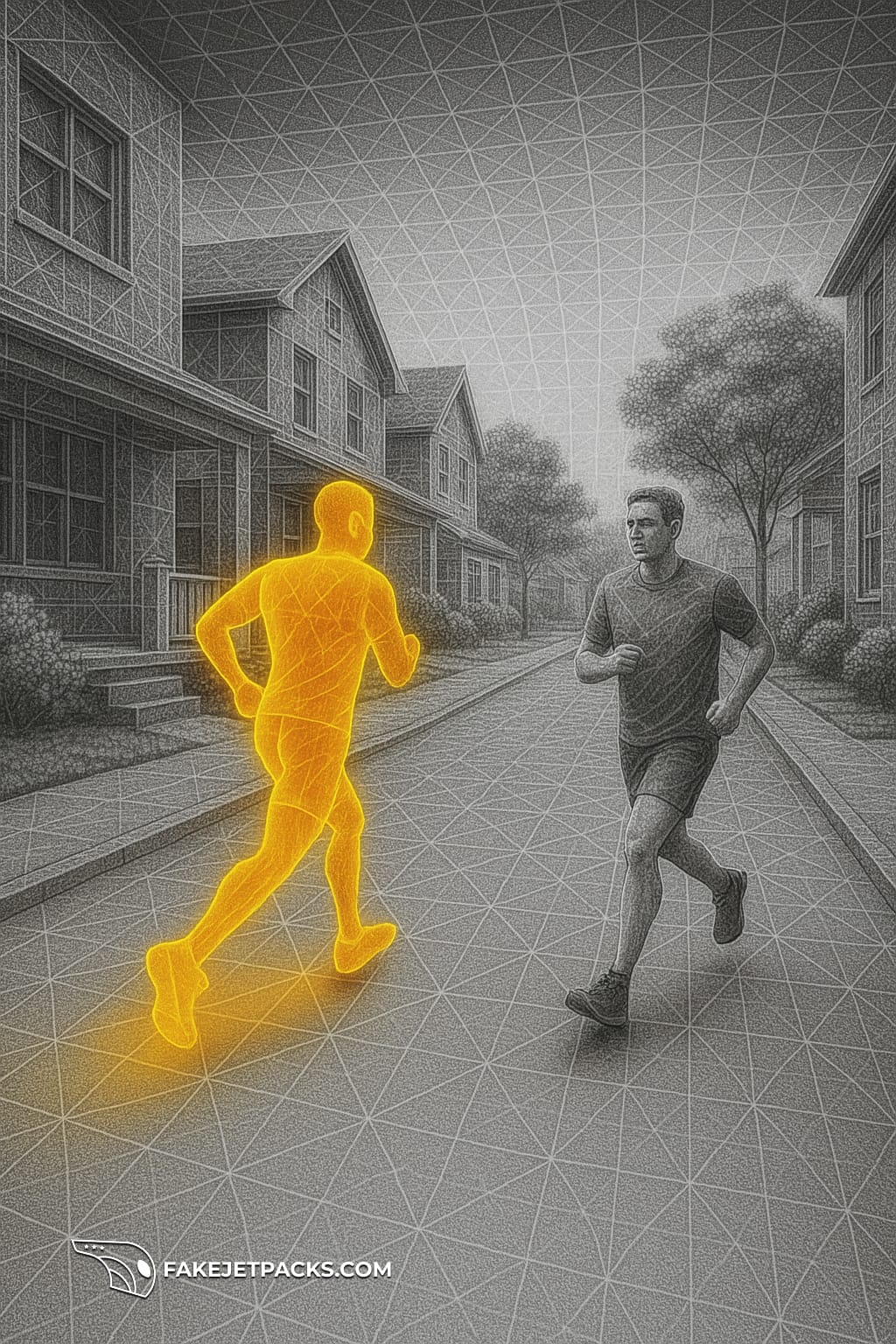Ghost Runner
An augmented reality training partner, representing your former self running along the same path, so that you can see if you're going faster, slower, or the same pace.

There are two primary issues with the adoption of spatial computing devices:
- Hardware: The consumer hardware device is either too expensive (Apple Vision Pro) or the field of view is too small and the resolution too poor (Meta Orion). The issue is that we have yet to converge the pass-through video (Apple) and waveguide (Meta) technologies.
- Apps: Aside from having a large AR monitor to work from or a movie theater on Mars (Apple), consumer spatial computing devices do not offer much ongoing utility to its wearer.
Solution

Given that we can create a workout-friendly pair of AR Ultra Glasses that sync with the Apple Watch Ultra, the Ghost Runner app is a highly desirable use case with a large built-in community.
There are about 650M active runners globally and 1B occasional runners who are likely to find value in a pacing hologram of their former selves to compete against. Not only does this make it more fun, but it also helps improve performance over time.
This small feature has a big impact.
Just like removing the wires from Apple AirPods, showing your past selves running in front of you could be quite the motivator to improve not just your health, but that of a planetary population.
We just need the spatial mesh of your neighborhood and yourself.



Discussion